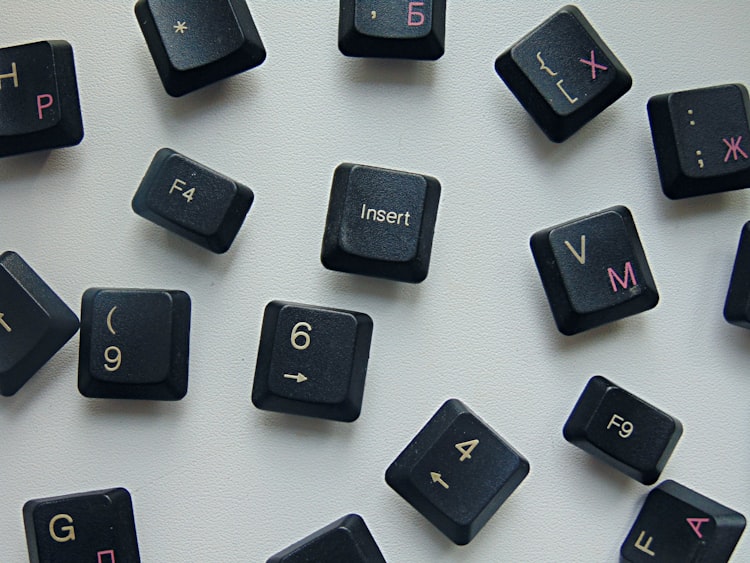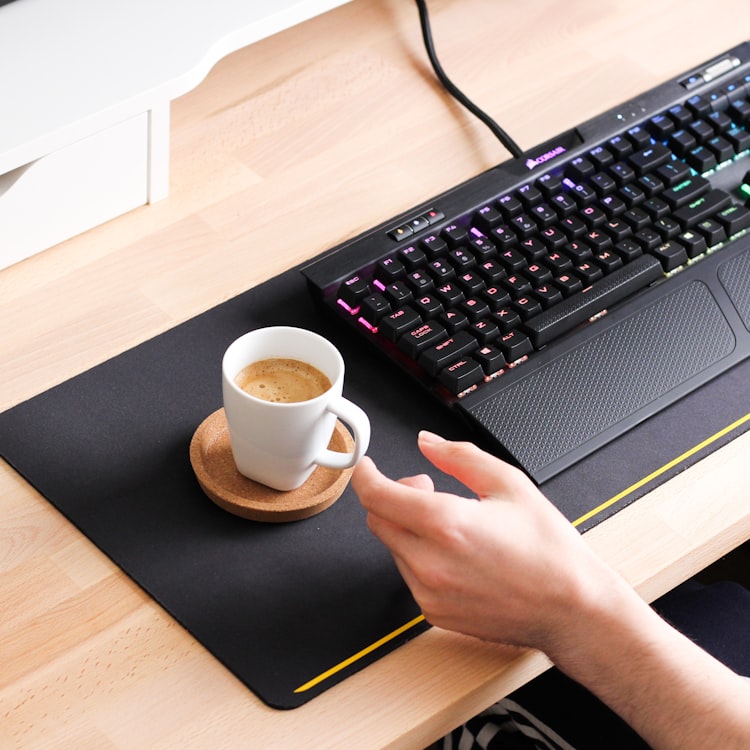Making the Most of the TEK in Web Browsing
It just occurred to me today that there are a host of things that I "take for granted" when working with and evaluating ergonomic keyboards that I have not written down or explained. I'll focus shortly on one of them today: how an ergonomic keyboard can affect your browsing experience and other "consumable" interactions on the computer.
The mouse is an insanely efficient and powerful input device, but it has largely been misunderstood by many people. Apple did some laudable human studies back in the day that demonstrated how the mouse is superior to the keyboard for certain tasks. In particular, when attempting to navigate spacially, the mouse is significantly faster than the keyboard cursor keys and other navigational aids, despite feeling slower. This is something that many keyboard enthusiasts fail to appreciate, especially when working with text editors or other text heavy operations.
However, most people today will use either the mouse or the keyboard for doing their web browsing. I would venture to guess that the vast majority use their mouse. This is generally a good thing, because the mouse is a more efficient device for this sort of navigation on the whole. However, with a good ergonomic keyboard, people are missing opportunities to make their browsing even more effortless, seamless, and enjoyable by integrating a combined approach.
Modern interface design has shown us how much we can move beyond the "chrome heavy" interface paradigm, filled with many deeply nested menus and lots of buttons and fields to fill out everywhere. Instead, by focusing on content over chrome, we are able to focus on our work more, and eliminate needless distraction. Unfortunately, much of the popular stuff you find online will show you how to get started with such interfaces, and maybe show you how beginner friendly they can be, but they don't show power user's or more technical people how to optimize their workflows to fit into this new interaction paradigm efficiently. Often you will find that people subjectively feel less productive with these new interfaces because there isn't as much "going on" and they feel that they have lost the power to express their workflow visually, which is often associated with an increase in power.
In reality however, it's just that the power has moved beyond simply tweaking the visual layout and moved into the area of optimizing the interaction paradigm, which is often invisible.
In this article I want to focus specifically on how I use the TEK in conjunction with a high-accuracy mouse to improve my browsing experience.
The mouse is the superior pointing device, and allows you to navigate and point more precisely than a keyboard will let you do, with less effort and more quickly. So it remains the primary input device. However, because the mouse requires only a single hand to operate, when browsing the web, you are able to "parallelize" actions and use your left hand to perform other tasks that you can foresee coming up, if your keyboard is set up to make this easy for you.
Firstly, stay away, in general, from the cursor keys. They are not your friend for most instances, and while it can be nice to have them around sometimes, you generally want to optimize your layout to avoid using them. That is not to say, though, that you can't use your keyboard. Modern web browsers have many useful shortcuts built into them. In particular, the shortcuts I find to be the most useful are those that supplant or replace the need for "single click" chrome items. Chrome that requires a new layer of interaction, such as Microsoft Edge's Share layer, are poor candidates, IMO for a keyboard shortcut. However, buttons like refresh, back, and forward are all excellent candidates. As is a shortcut for addin things to the reading list (I will be focusing on Microsoft Edge here because that is the browser I find myself using most right now). For reference, Microsoft provides a list of these shortcut keys.
What we want to focus on are the keys that can be hit easily and reliable with a single left hand (assuming that most of you are right handed, sorry lefties) without looking at the keyboard, and which does not disrupt from your ability to use the mouse effectively. Moreover, we want to find things that are slow or less than ideal to use the mouse for. This would particularly mean anything that requires us to move the mouse to hit a small chrome button (such as the back button), which takes our focus off of the content on which we are working. The mouse, in general, should stay focused on the content, and avoid the chrome if possible.
Here's where a TEK keyboard or other properly confiured and laid out ergonomic keyboard will make your life easier. Many of these keyboard shortcuts are located in the wrong place on the standard keyboard. That is, things like the Home, End, Page Up, Page Down, Backspace, and Delete are all located on the right side of the keyboard. That makes them very hard to hit accurately and reliably with either hand, because they are not within the normal typing range of your home row position. They also move the mouse further away from you making it harder to use the mouse ergonomically.
With a proper TEK keyboard, however, the Home, End, Page Up, and Page Down keys are located in a cross arrangement directly below your left hand. The End key can be hit with your left thumb without breaking position, as the Home key can with the left pinky. Page Up and Page Down can be activated accurately through touch typing and touch indexing on these keys due to their shape and layout, without requiring a signification motion of the left hand across the body.
IMO, these are your first and primary navigational aids to the mouse when web browsing. The scroll wheel on the mouse is good for smaller, minute movements, but generally, when consuming web content, you want to be able to page through things quickly, get to the top and bottom efficiently, and a keyboard like the TEK allows you to do this seamlessly with your left hand while letting your mouse follow the content looking for things to click on and allowing you to do things like highlighting or mousing over. It's the ultimate in smooth maneuvors that increases your capacity to stay in the flow of the moment.
But there's more. While I'm a fan of some buttons such as Back and Forward being mapped to the mouse hand, I'll admit that I think it's generally better if you have a TEK keyboard or one like it that puts something like the Backspace key (for Back) right in the middle row, which allows you to go back without breaking stride either. This is a much better location for this key than on the right side of the keyboard such as with a normal keyboard. It is also one of those "one key wonders" that is easy to remember and easy to use. After you start making the Home/End/PgUp/PgDn combo a part of your daily life, this next one is the next I would throw in there.
Now, with a good keyboard or software, you should have your CTRL key somewhere easy to access and nice to work with. In the way I have it mapped on my TEK, I have the Shift key where the Caps Lock would be, and the control key right below it where the shift key would normally be. This means that Refreshing, Finding, Searching, and other such shortcuts are much easier to work with because they are as easy as typing a capital letter on a normal keyboard. You've reduced the workload on your left hand and made it more likely that you'll actually use these shortcuts. They are also the sorts that integrate well with mouse use. All of the following can be easily and readily typed with the left hand while keeping the right hand on the mouse and working. That is, if you have a TEK or similarly configured keyboard.
- CTRL-R : Refresh
- CTRL-E : Search Query Address Bar
- CTRL-F : Find on Page
- CTRL-D : Add to Favorites or Reading List
- ALT-C : Ask Cortana on Selection (Love this!)
- CTRL-SHIFT-R : Reading View
- CTRL-T : New Tab
- ALT-D : Select Address Bar
- CTRL-Enter : www.
.com in address bar
As you can see, I focuse my use of the left hand when browsing on those "single action" shortcuts that give me the biggest bang for my buck and let me leverage the mouse further, rather than shortcuts that use the keyboard to emulate functions that the mouse can do better and more efficiently.
As an example of synergy, consider the shortcuts for accessing the address bar in some way or another. You want those so that your mouse hand is focusing entirely on selecting the part of the URL that you want, rather than on selecting and clicking on the bar to highlight it. While the mouse is moving to get into position to select and the like, let the left hand work on actually activating that field and selecting the URL. This helps to avoid the "double click" confusion that can happen when trying to select URLs or parts of URLs in the address bar when you have to click on the bar first to activate the field.
The final set of shortcuts I want to leverage with my left hand are keyboard mouse chords. These would be using CTRL, SHIFT, and ALT or some combination of these to modify the behavior of your click. These are incredibly useful and powerful if you can integrate them into your browsing practice, because they remove the need, for the most part, of using the contextual right-click menu for accomplishing these tasks, while still taking advantage of the pointing accuracy and speed of the mouse. Best of both worlds in my opinion.
I hope that this has helped some of the more ergo-crazy among you to appreciate the value of an ergonomic keyboard not just as a tool for entering text fast, but also as a tool for optimizing your combined mouse/keyboard workflows with mouse heavy applications, and possibly that it has given you some idea of how you can evaluate your use of the keyboard in your mouse-heavy apps to decide whether you are using the keyboard to the fullest effect, or just using the keyboard to try to replace the mouse when a combination of both would be more effective.

